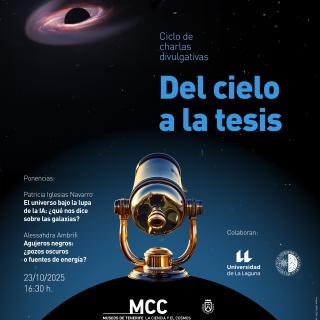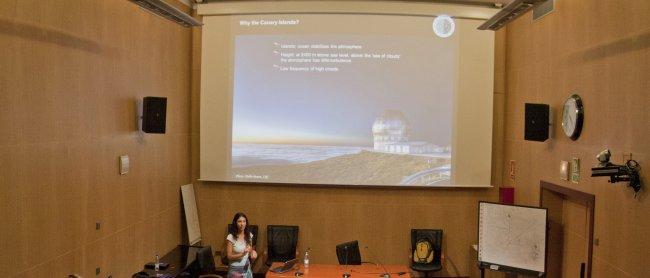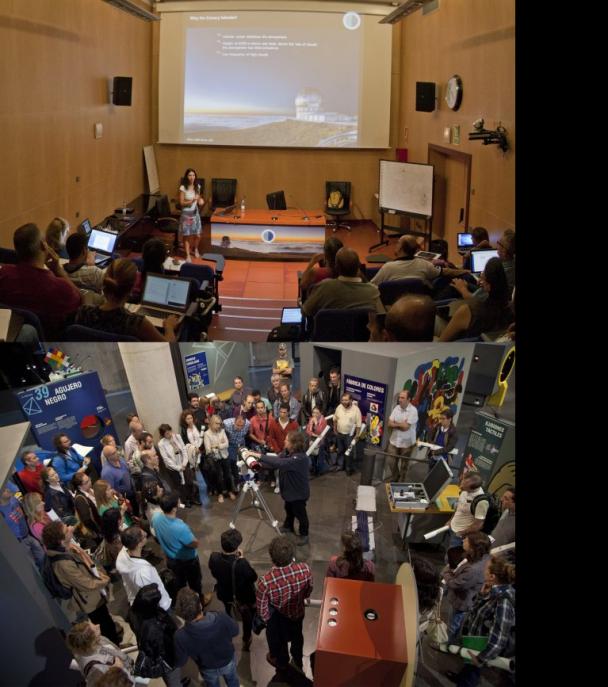It may interest you
-
 El Museo de la Ciencia y el Cosmos , del Organismo Autónomo de Museos y Centros del Cabildo de Tenerife, acogerá el próximo jueves 23 de octubre a las 16:30 horas una nueva cita del ciclo de divulgación científica “Del cielo a la tesis”, organizado en colaboración con la Universidad de La Laguna (ULL) y el Instituto de Astrofísica de Canarias (IAC). Este ciclo, impulsado por estudiantes de doctorado del IAC, tiene como objetivo acercar a la ciudadanía los temas más actuales de la investigación astrofísica contados en primera persona por quienes los desarrollan. Cada sesión, de carácterAdvertised on
El Museo de la Ciencia y el Cosmos , del Organismo Autónomo de Museos y Centros del Cabildo de Tenerife, acogerá el próximo jueves 23 de octubre a las 16:30 horas una nueva cita del ciclo de divulgación científica “Del cielo a la tesis”, organizado en colaboración con la Universidad de La Laguna (ULL) y el Instituto de Astrofísica de Canarias (IAC). Este ciclo, impulsado por estudiantes de doctorado del IAC, tiene como objetivo acercar a la ciudadanía los temas más actuales de la investigación astrofísica contados en primera persona por quienes los desarrollan. Cada sesión, de carácterAdvertised on -
 El ministro de Industria y Turismo, Jordi Hereu Boher, realizó una visita al Observatorio del Teide (OT), en Tenerife, donde pudo conocer de primera mano la labor científica, tecnológica y de innovación que se desarrolla en este enclave astronómico, referente internacional tanto en observación solar como nocturna. El ministro fue recibido por el director del Instituto de Astrofísica de Canarias (IAC), Valentín Martínez Pillet, y por la subdirectora, Eva Villaver Sobrino. A la visita también asistió el subdelegado del Gobierno en Santa Cruz de Tenerife, Jesús Javier Plata Vera, así comoAdvertised on
El ministro de Industria y Turismo, Jordi Hereu Boher, realizó una visita al Observatorio del Teide (OT), en Tenerife, donde pudo conocer de primera mano la labor científica, tecnológica y de innovación que se desarrolla en este enclave astronómico, referente internacional tanto en observación solar como nocturna. El ministro fue recibido por el director del Instituto de Astrofísica de Canarias (IAC), Valentín Martínez Pillet, y por la subdirectora, Eva Villaver Sobrino. A la visita también asistió el subdelegado del Gobierno en Santa Cruz de Tenerife, Jesús Javier Plata Vera, así comoAdvertised on -
 Del 10 al 13 de junio, las principales instalaciones astronómicas de España se dan cita en Granada para compartir conocimientos, tecnologías y estrategias de colaboración. Bajo el lema “Promoviendo sinergias entre grandes observatorios españoles”, este encuentro reúne a cerca de un centenar de expertos en tecnología, ingeniería y gestión que trabajan en las Infraestructuras Científicas y Técnicas Singulares (ICTS) en astronomía del país. El objetivo de esta segunda edición es consolidar los vínculos creados en la primera reunión, celebrada en La Palma en 2023, y seguir avanzando enAdvertised on
Del 10 al 13 de junio, las principales instalaciones astronómicas de España se dan cita en Granada para compartir conocimientos, tecnologías y estrategias de colaboración. Bajo el lema “Promoviendo sinergias entre grandes observatorios españoles”, este encuentro reúne a cerca de un centenar de expertos en tecnología, ingeniería y gestión que trabajan en las Infraestructuras Científicas y Técnicas Singulares (ICTS) en astronomía del país. El objetivo de esta segunda edición es consolidar los vínculos creados en la primera reunión, celebrada en La Palma en 2023, y seguir avanzando enAdvertised on

